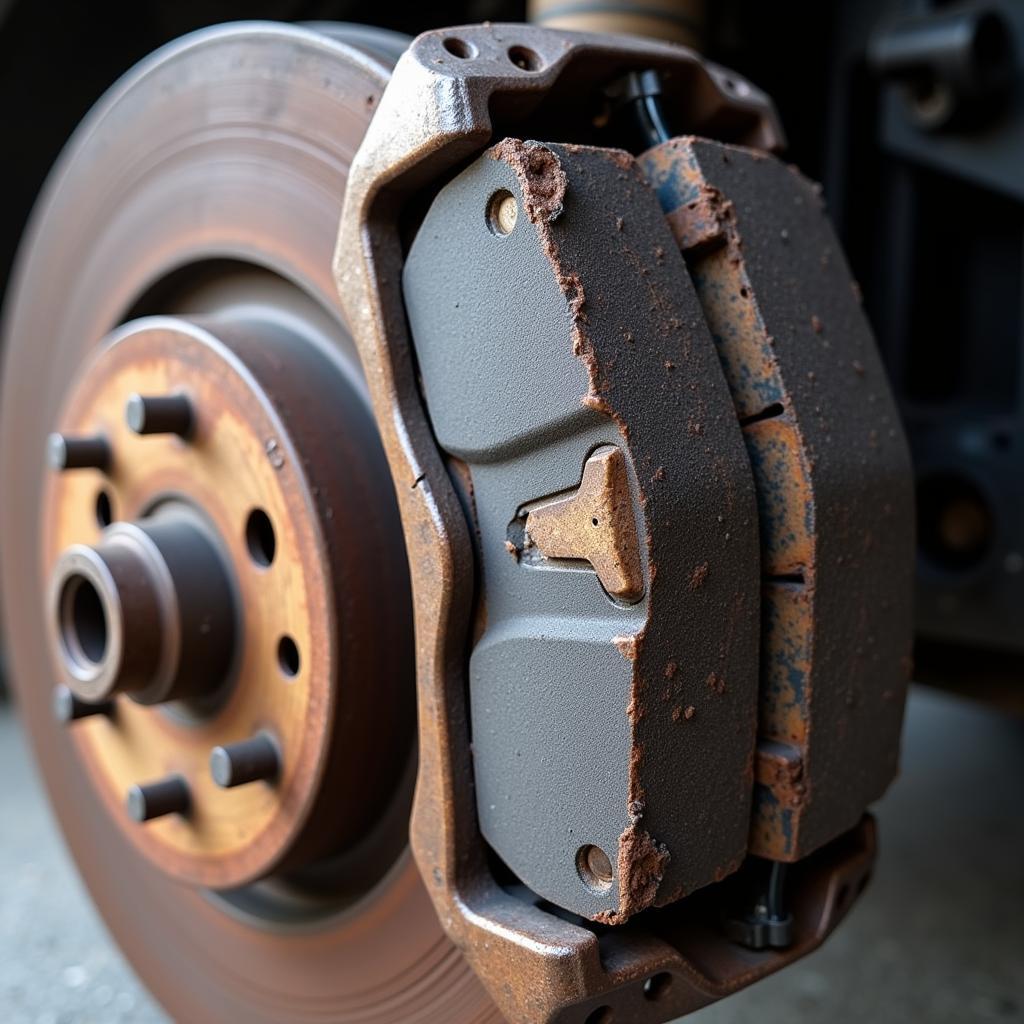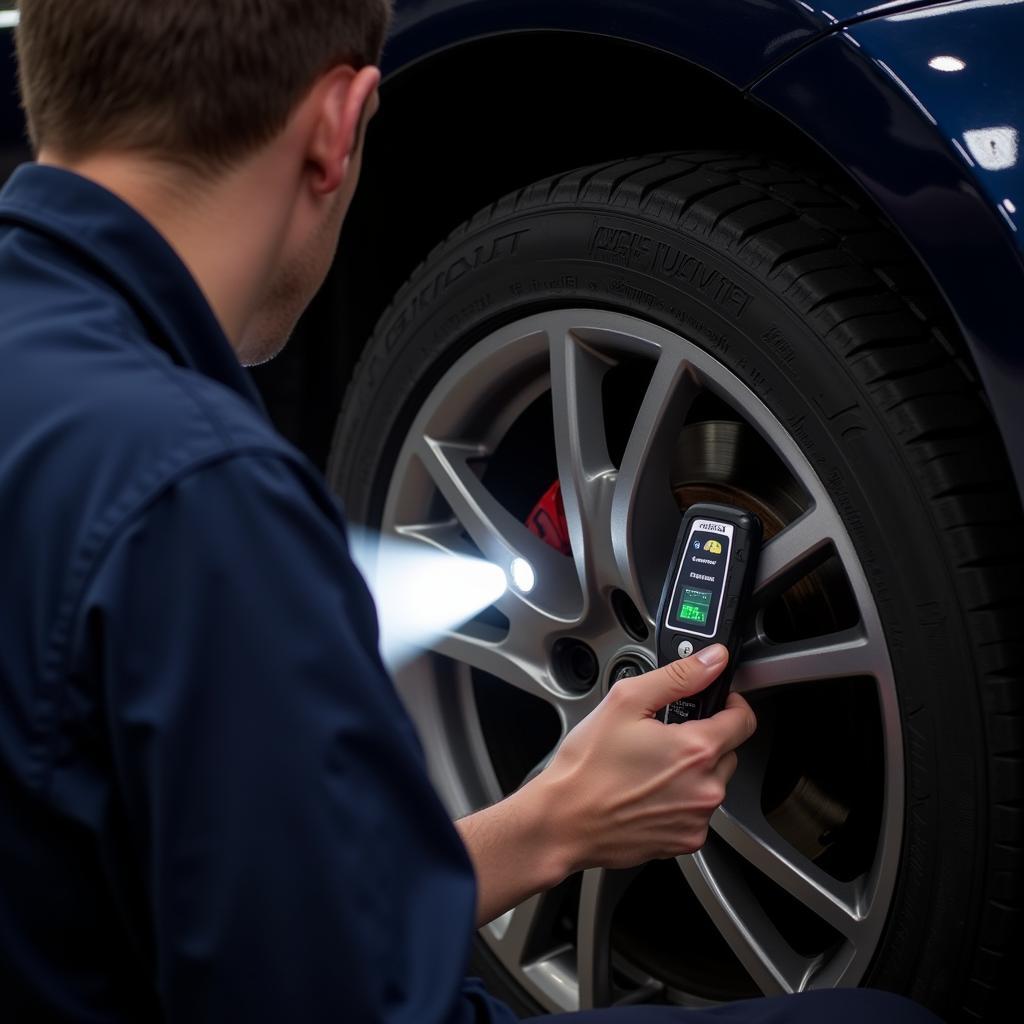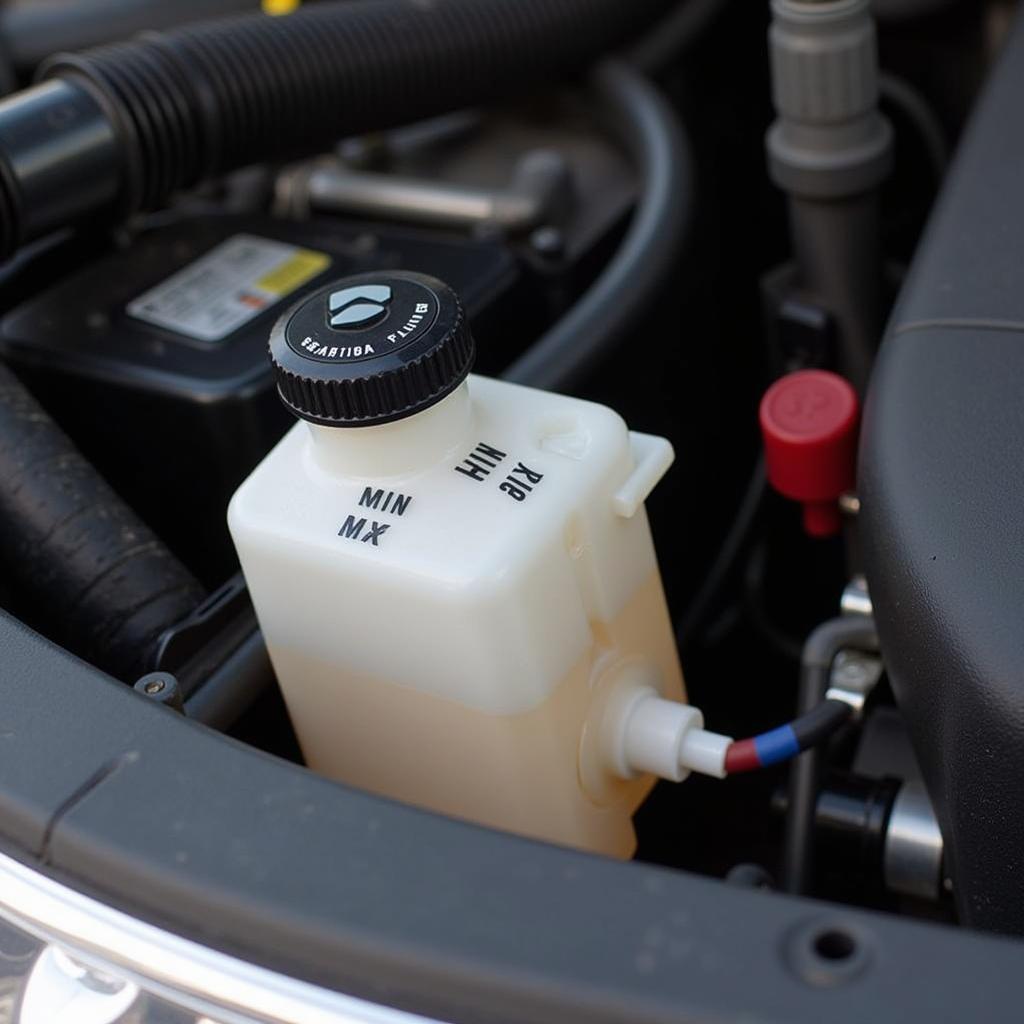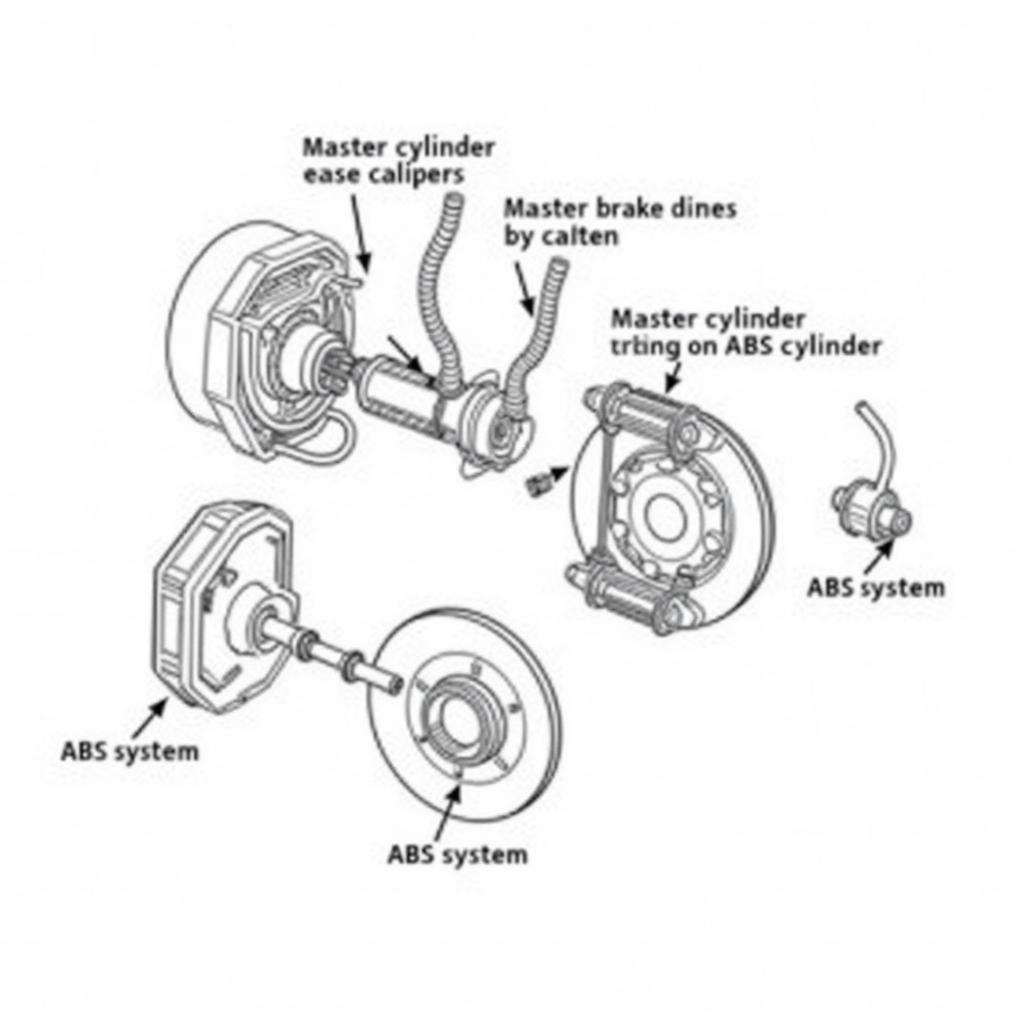The brake pad warning light on your Seat Alhambra is a crucial safety feature designed to alert you to potential issues with your braking system. Ignoring this warning light can lead to costly repairs and, more importantly, compromise your safety on the road. This comprehensive guide will walk you through the common causes of a brake pad warning light in a Seat Alhambra, how to diagnose the problem, and the steps you can take to resolve it.
Understanding the Brake Pad Warning Light
Your Seat Alhambra’s brake system is equipped with sensors that monitor the thickness of your brake pads. When the pads wear down to a certain level, the sensor triggers the warning light on your dashboard. This light usually appears as a circle with parentheses on either side and may be accompanied by an exclamation mark or the word “BRAKE.”
Common Causes of a Brake Pad Warning Light
While worn brake pads are the most common reason for the warning light, other factors can also contribute to this issue. Let’s delve into some of the potential culprits:
1. Worn Brake Pads
This is the most likely culprit. Brake pads are designed to wear down over time as they generate friction to slow down your vehicle.
 Worn brake pads on a Seat Alhambra
Worn brake pads on a Seat Alhambra
2. Damaged or Worn Brake Sensors
Brake pad wear sensors are small metal tabs embedded within the brake pad material. Over time, these sensors can become damaged, broken, or worn out, leading to a false warning light.
3. Low Brake Fluid Level
Brake fluid is the lifeblood of your braking system, transmitting the force from your foot on the brake pedal to the wheels. If the brake fluid level drops too low, it could trigger the brake pad warning light.
4. Faulty ABS System
The Anti-lock Braking System (ABS) plays a vital role in preventing wheel lockup during braking. A malfunctioning ABS system can sometimes trigger the brake pad warning light.
5. Electrical Issues
Like any electrical system, the wiring and connections related to your brake warning light system can experience issues such as loose connections, corrosion, or damage, leading to a false warning.
Diagnosing the Problem
When your brake pad warning light illuminates, it’s essential to diagnose the problem promptly to ensure your safety and prevent further damage.
1. Check Your Brake Pads
If you’re comfortable with basic car maintenance, you can visually inspect your brake pads. Look through the spaces between the spokes of your wheels to get a glimpse of the brake pads. If they appear significantly thinner than a dime, it’s time for a replacement.
 Inspecting brake pad thickness on a Seat Alhambra
Inspecting brake pad thickness on a Seat Alhambra
2. Check Your Brake Fluid
Locate the brake fluid reservoir under the hood of your Seat Alhambra. The reservoir will have a “MIN” and “MAX” marking. If the fluid level is below the “MIN” mark, it needs to be topped up.
3. Seek Professional Help
If you are unsure about diagnosing the issue yourself or suspect a more complex problem, it’s always best to consult a qualified mechanic specializing in Seat vehicles. They have the expertise and equipment to diagnose and repair the issue accurately.
Resolving the Issue
The solution to your brake pad warning light will depend on the underlying cause. Here are some potential fixes:
1. Brake Pad Replacement
If your brake pads are worn, it’s crucial to have them replaced as soon as possible. Driving with worn brake pads compromises your braking performance and safety.
2. Brake Sensor Replacement
Damaged or worn brake sensors should be replaced to ensure accurate brake pad wear monitoring. This is typically done at the same time as brake pad replacement.
3. Brake Fluid Top-up or Flush
If your brake fluid is low, top it up to the recommended level using the appropriate brake fluid for your Seat Alhambra. If the fluid appears dark or contaminated, a complete brake fluid flush may be necessary.
 Brake fluid reservoir location on a Seat Alhambra
Brake fluid reservoir location on a Seat Alhambra
4. ABS System Repair
A qualified mechanic should diagnose and repair any faults within the ABS system to restore its functionality.
5. Electrical System Repair
Any electrical issues related to the brake warning light system, such as loose connections or damaged wiring, need to be identified and repaired by a qualified mechanic.
Conclusion
The brake pad warning light on your Seat Alhambra is a critical safety feature that should never be ignored. Regular maintenance, including timely brake pad replacement and brake fluid checks, can help prevent unexpected brake problems and ensure your safety on the road. Remember, if you’re ever unsure about any aspect of your vehicle’s braking system, don’t hesitate to seek professional assistance from a qualified mechanic.

